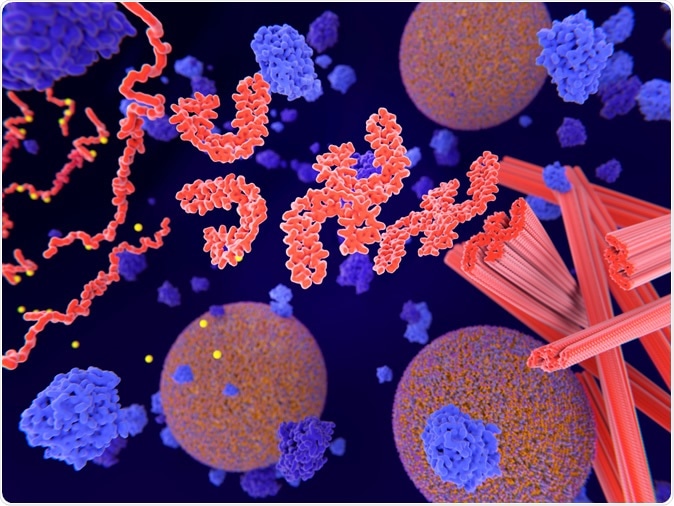Excessive daytime napping often develops long before the memory problems associated with Alzheimer's disease occur. Now, researchers may have found the striking new biological explanation for this phenomenon.
A team of researchers at the University of California, San Francisco (UCSF) found that Alzheimer’s disease attacks the brain region responsible for keeping people awake during the daytime.
It was already known that Alzheimer’s disease could alter a person’s ability to sleep at night, and it had been previously known that the AD patients napped several times the day to catch up.
Alzheimer’s attack brain regions that control wakefulness
However, the new study, which was published in the journal Alzheimer’s and Dementia, shows that the build-up of tau protein is thought to stop brain regions that control wakefulness from working properly - locus coeruleus (LC), lateral hypothalamic area (LHA), and tuberomammillary nucleus (TMN).

Alzheimer's disease: Tau proteins aggregate to neurofibrillary tangles in a neuron axon. Image Credit: Juan Gaertner / Shutterstock
The researchers suggest three regions in the brain that are involved in keeping people awake during the day, are among the first ones attacked by the degenerative condition. When the brain regions become damaged, it can lead to excessive daytime sleepiness, even in the absence of significant nighttime sleep problems.
"Our work shows definitive evidence that the brain areas promoting wakefulness degenerate due to the accumulation of tau -- not amyloid protein -- from the very earliest stages of the disease," Dr. Lea Grinberg, associate professor of neurology and pathology at the UCSF Memory and Aging Center and author of the study, said in a statement
Tau protein levels and neuron numbers
To gather the needed data, the researchers performed stereology in postmortem brains from Alzheimer’s disease patients and healthy controls. In total, they studied the brains of 20 deceased individuals, 13 of which have Alzheimer’s disease, and seven were from healthy individuals. They studied the levels of tau protein and quantified the neurons in three brain regions that help people stay awake.
Compared to healthy brains, the team found that the brains of people with Alzheimer’s disease had marked tau buildup in all the three brain regions that promote wakefulness. They found that the three regions lost as much as 75 percent of their neurons.
"It's remarkable because it's not just a single brain nucleus that's degenerating, but the whole wakefulness-promoting network," Jun Oh, one of the authors, said.
"Crucially this means that the brain has no way to compensate because all of these functionally related cell types are being destroyed at the same time,” he added.
They also looked at seven brains of patients with progressive supranuclear palsy and corticobasal disease, which are two other types of dementia. The brains with these diseases don’t have any damage in the three brain regions. Hence, Alzheimer’s disease uniquely affects the brain.
The new finding is connected to an earlier study by Grinberg, focusing on mood changes, including depression and anxiety in people with Alzheimer’s disease. They found that people who died due to AD had increased levels of tau protein in the brain stem.
"Our new evidence for tau-linked degeneration of the brain's wakefulness centers provides a compelling neurobiological explanation for those findings. It suggests we need to be much more focused on understanding the early stages of tau accumulation in these brain areas in our ongoing search for Alzheimer's treatments,” Grinberg said.
The new study adds to the body of knowledge about Alzheimer’s disease, which isn’t just about memory problems. But, it’s also about many brain changes that occur due to the formation of tau proteins in the brain. The study also paves the way for the formulation of new treatment therapies for patients with Alzheimer’s disease.
Alzheimer’s disease (AD) is a progressive disease starting with mild memory loss, leading to the loss of the ability to talk, carry a conversation, and respond to the environment. It’s irreversible and progressive, which affects the brain and slowly destroys memory and thinking skills. In the long run, people with AD can have problems carrying out the simplest tasks. AD is the most common type of dementia.
Today, an estimated 5.8 million people in the United States are living with Alzheimer’s disease, making it the 6th leading cause of death.
Journal reference:
Leng, Yue et al. Alzheimer's & Dementia: The Journal of the Alzheimer's Association, https://www.alzheimersanddementia.com/article/S1552-5260(19)30113-X/fulltext